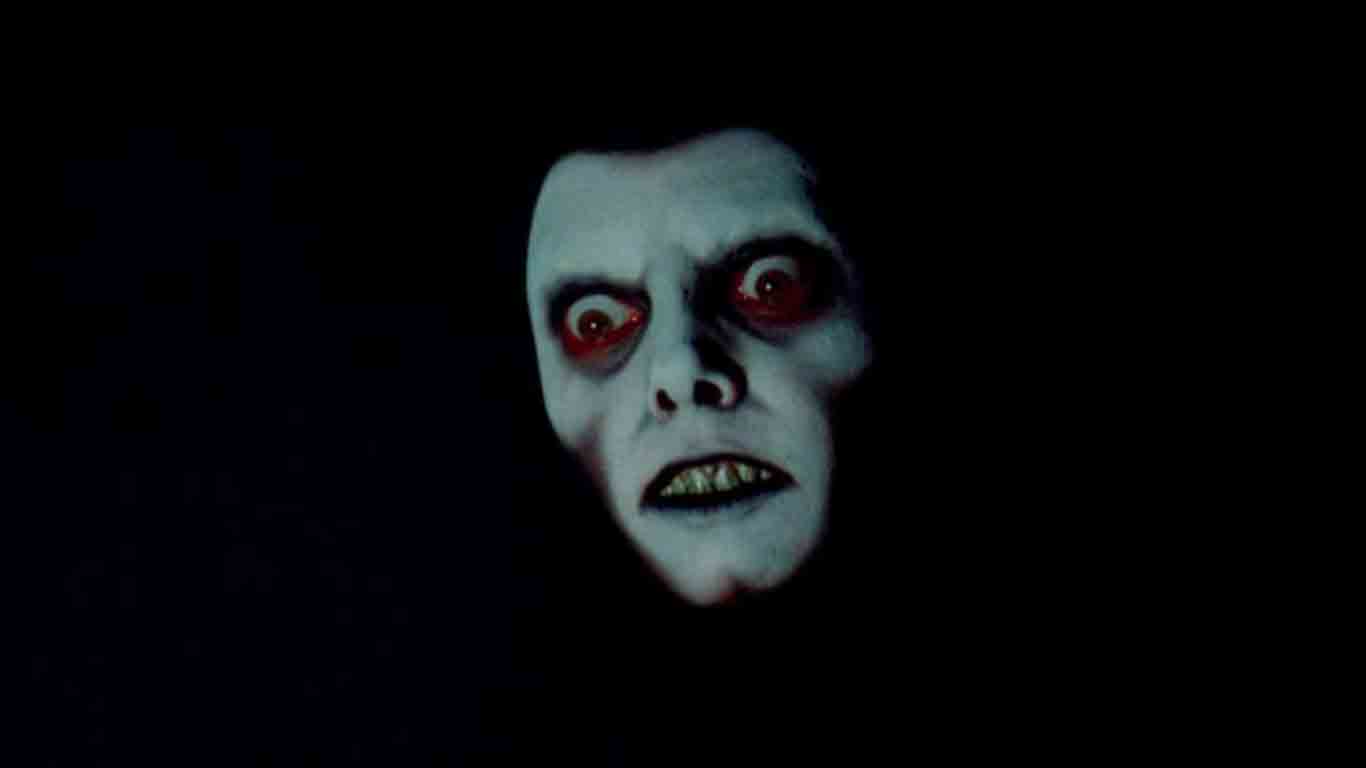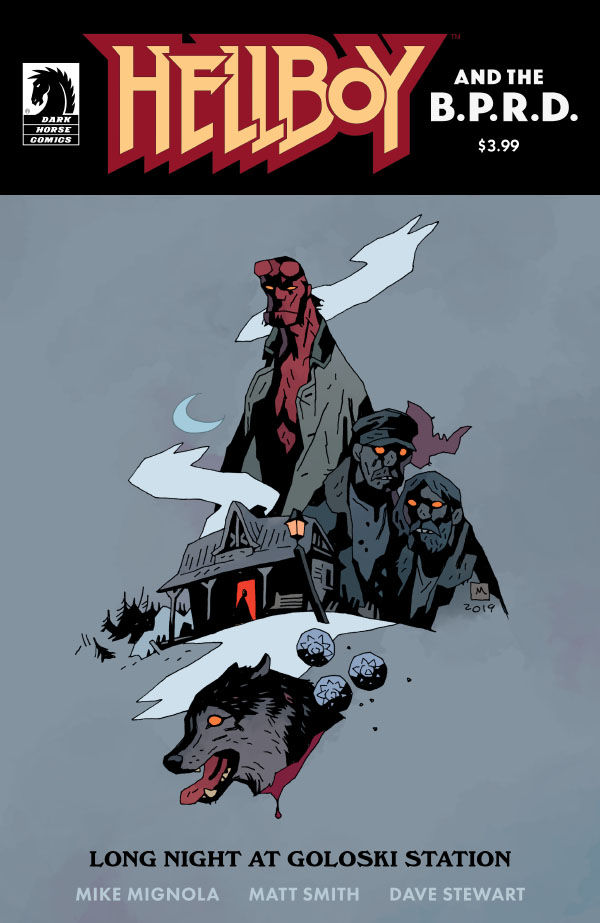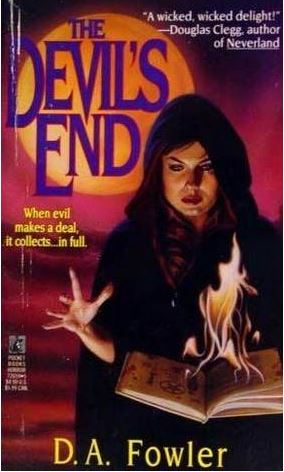
Review: The Devil’s End by D.A. Fowler is an Eyeball Explosion at the very end
More Videos
Published
4 years agoon
By
J.M. Brannyk
Trigger warnings: animal abuse and gore mentioned
So, I wish that I had seen the original cover because that would have answered some of my questions. Not all of them, oh heavens no, but a good lot of them. Like, what time period are we in? I asked myself this over and over because it was unabashedly unclear. With references to Dick Tracy, Lana Turner, and MTV – it could be anywhere from the 1930’s to 1990’s (let’s get real, after the 90’s there really wasn’t an MTV anymore). With kids going to the corner store to get a coke and ride around town, it sounds like the 1960’s. But in one instance, it makes fun of the 1950’s, as if it were an era from a hundred years ago. It is both in the past and in the future. It is a paradox!
Oh wait, here’s the original cover:

Okay, great. Late 80’s, early 90’s – got it. Poof, I’m there. And I’m deducing that it was written by an older person because, again, a nine year old boy doesn’t know what the hell a Dick Tracy is in the late 80’s-early 90’s (trust me, no one saw that film and everyone who has has long since blocked it from their memory).
Oh, what, you want to know about the book? Oh, yes, I should review it since I read it. Or rather, listened to it, via Audible. This is the Audible cover:
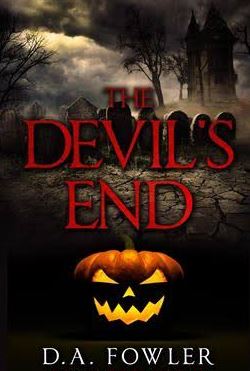
I have to say, it doesn’t do it any justice at all. Even for a book that I’m about to give two Cthulhus to, it deserves the original cover because it explains the book so much better and is just a beautiful image. It primes you for what the book is truly about and what to expect – white people problems witchcraft.
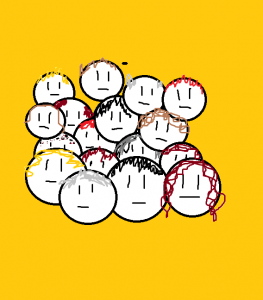
The Plot:
There are a million characters, I’m going to narrow them down to three: Nancy, Lana, and Spiro.
Lana is the new girl in town, just moved from Texas after her mother’s messy divorce and work relocation. She is beautiful, but down-to-earth, and trying to find new friends while her mother resettles and her younger brother is a straight-up asshole. She is just the girl next door, literally.
Next door lives Spiro, a boy Lana’s age, with developmental and intellectual disabilities. He is shy, awkward, and horrendously bullied at school, regardless of his enormous stature. Growing up fatherless, his mother is cruel and archaic, punishing him for every imagined slight and then often neglecting him. He becomes infatuated with Lana, due to her kindness.
Nancy is a popular girl in the school, brash and unafraid of anything, she goes into the crypt one night of the local cursed family and finds a book. The local legends say that the family were witches and had sacrificed a baby to the devil for powers and immortality, and intrigued, Nancy begins to dabble with the book, to see if the rumors are true.
All three of their lives interweave when mysterious things around town keep happening – could Nancy be the cause of it? Or perhaps the family isn’t as dead as everyone thought?
Thoughts:
Okay, first off, the beginning 3/4ths of this book are pretty uninteresting; it’s mainly setting up “character” where there just isn’t any. As stated, there are so many characters that it’s ridiculous, even the parents of the kids are introduced, and then other characters are introduced half-way in. It’s a mess. Honestly, a lot of it could have been cut down and wouldn’t be missed.
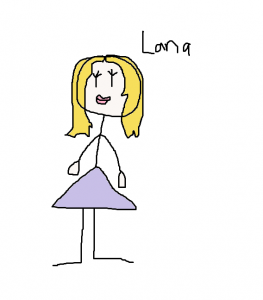
To boot, all of the characters (except for Lana) are awful, insufferable people. It’s hard to listen to them when they are moldy garbage people who are just as interesting as the little bits of toilet paper stuck to the tp roll. Lana is constantly surrounded by young men who want to sexually harass her, her brother who literally wants to ruin her life, and the clique-ish girls at the school. But at the same time, it’s hard to identify with her because we’re constantly reminded how utterly smoking hot she is.
Most of the reviews I’ve read love the first part and hate the second, or never even get to the second. The “second” is the last 1/4th and was infinitely better because it went bawls-to-the-walls insane and gory. Fowler is actually very good at writing gore and, hoo boy, there needed to be 80% more gore and spooky and 120% less talking about nothing and getting Cokes at the burger shop.
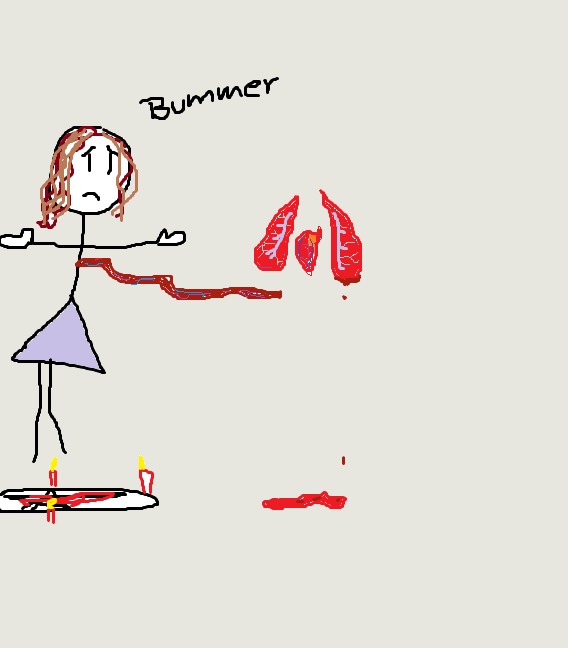
The gore is mostly body horror, but there’s plenty of animal murder (which a lot of people found offensive by the comments I read) and…I’m not sure how to put this…gross baby-making-type stuff. You could find it vulgar, I mostly just found it erring on the side of sexist (and yes, I know this was a lady writer). Eyeballs do explode. I found that delightful. I also was entertained when a character’s naughty-bits started “spraying blood all over the living room like an unmanned firehouse”.
There are a few clever ideas that I won’t let spoil the story but, lightly, I think how some of the demons manifest and are different characters would have been more terrific if better explored and savored. I always find demons as characters interesting; unfortunately, these were the typical, standard issue demons, which is almost ironic because there’s a point when someone does a bit with The Exorcist, and then Fowler just kind of copies it later. It would have been great to set up the human characters in the first part, slowly trickle the demons in with their own personalities so that we’re acquainted with them, and then go to the climax of the story with everything mixed.
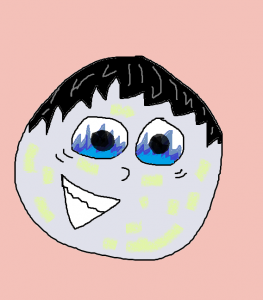
Honestly, I think this would have worked better as a short story or novella. There was too much fluff to get to where we wanted and needed to be.
Brain Roll Juice:
I’m going to get this out of the way first because it didn’t
sit well and now that I have a timeline I can say, “Don’t give me ‘it was just
different times’ bull-hockey.” It was, indeed, different times. Different,
racist and sexist times. But before those fun times, let’s get to that other
thing stuck in my craw – the treatment of Spiro. And I’m not talking about the
kids in the book.

Spiro has some kind of developmental and/or intellectual disability, brought on from when his mother contracted German measles/Rubella and he, in utero, suffered from encephalitis (inflammation of the brain). He is seventeen, over six feet and two hundred pounds, and physically and mentally abused by his peers, teachers, and mother. He is in the same classes without additional support as his peers. He is punished with detention for “daydreaming”. He is called “’Tardo” and “freak” within earshot of teachers and authority figures. He is often physically abused by his mother.
He also turns into a disgusting creep and is painted in so broad and stereotypical a brush that I found it offensive.
From “gentle giant” stereotype to “creeper of the only nice girl to me” stereotype to “snapping from repression” stereotype to “spoiler spoiler spoiler” stereotype. There isn’t anything clever or sincere about the character and that chips my paint. He is the only diverse character in the whole bunch and he has absolutely nothing of substance to say or do. I was furious because I was excited to see a rare neuro-diverse character in horror as, what I thought, was a lead role (the first chapter starts with him – he introduces the story), or at least a sympathetic role.
And no, that ending doesn’t factor in. Without going into
details, let’s just say that his send off was very similar to the
classic moment in TV history:

The same sentiment can be said with the wildly racist comments that drop out of flipping nowhere, like, “that’s why Japanese people’s eyes are slanted…all the books they read”, “Is an African’s hair kinky?” (used like “does a bear sh– in the woods?”), and “ghetto blaster” as a sobriquet for a boombox. Or the introduction to the only black character at the end of the book that actually calls his peers, “chillun”.
Poor Michael Reaves, the narrator, for having to cough out these lines and make the best out of it. He’s even had to narrate a gastric sleeve cookbook and probably had a better time with that.

But let’s take a look back – this was published in 1992. The year that Dr. Mae Jemison became the first African American woman to travel into space; that the Kentucky Supreme Court held that laws criminalizing same-sex sodomy are unconstitutional (and accurately predicted that other states and the nation would eventually rule the same way); and a TWO full years after Americans with Disabilities Act of 1990 was signed into law.
So, what am I saying? I’m saying that you’re right. The times were different and changing. This book has aged and will continue to do so. Even if this is just a pulp horror novel, it’s also a time capsule. I can read this and watch a movie like “Scary Stories to Tell in the Dark” and see how far our narrative focus has changed. Call it SJW-appeasement or diversity-pandering, but it has changed. It’s no longer just 311 pages filled with average high school melodrama with occasional exploding eyeballs, but showing new facets from new perspectives to keep the same stories we keep telling each other fresh and engaging to more people.
And that leads me to wonder, what would these characters look like now? How would we react to them? How would they change the narrative if they were written today? And do people even know who Dick Tracy is anymore?
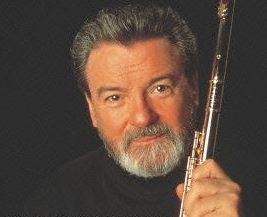
Bottom-line:
If you like gore, it’s drudgery to get through the first part. If you like character development, there isn’t much of any. If you like late-80’s to early-90’s nostalgia…I’d still advise against it. It’s not great and aged even worse.
 (2 / 5)
(2 / 5)
When not ravaging through the wilds of Detroit with Jellybeans the Cat, J.M. Brannyk (a.k.a. Boxhuman) reviews mostly supernatural and slasher films from the 70's-90's and is dubiously HauntedMTL's Voice of Reason. Aside from writing, Brannyk dips into the podcasts, and is the composer of many of HauntedMTL's podcast themes.

You may like
Dear readers, the time has come for some answers. At least, that’s what the teaser for the new installment of Monastery says. As usual, it delivers what it promised and more as we untangle the past and its connection to the present. Without any further ado, let’s talk about it, shall we?
Plot
We start the episode with a blast from the past. Cassandra and Celeste (Nicole’s aunt and Arthur’s lover for those with short-term memory) are in the hospital because of Celeste’s pregnancy complications. Cassandra promises her former best friend that she will ruin her all the while we find out Francis’s real parentage. The picture is finally starting to come together.
As we are back in the present day, our group is more scattered than ever. Thomas is his father Walt’s prisoner while David is still running around looking for Rocky. Fred on the other hand is just looking for any place to crash, homelessness and all. Our dethroned beauty queen Nicole is hiding away from everything – including her shame. Last but not least, little Henry is spending his time taking care of Nana Beth. Guessing that is his redemption for trashing all the evidence of Albert’s murder gathered so far. Although frustrating, his actions are understandable – the poor kid is traumatized and just wants some peace.
George Turner’s murder is still an active investigation. It is obvious that this cover-up wasn’t nearly as successful as Albert’s. I sure as hell hope that Francis gets his comeuppance sooner rather than later. Not particularly because Turner didn’t deserve it but so the rest of the characters would be safe from him. Although as I’ve said before, his clear descent into sociopathic tendencies is kind of fascinating to watch.
We also get an interesting development in what so far has been a tiny background detail, which is the Monastery Werewolf. As the creature comes to visit Rocky, we find out our resident star dog considers it family. Not going to lie, it took me a few reads to understand what this means. Now I’m getting all sorts of ideas as to how the supernatural ties into the rest of the story.
Speaking of the supernatural, it is none other than Madame Witch who frees Thomas from his captivity. Well, her contribution is indirect as she sends his best friend Alfie to help instead. Although I’d say currently the two should set their dynamic status to ‘it’s complicated’. As soon as he’s free, Thomas is immediately back in his detective mode. For arguably the first time he gets some real answers as we find out the whole backstory of Albert/Celeste/Cassandra triangle. I won’t go into details as that trio deserve their own article but let’s just say it gives Cassandra a big ass motive for killing her husband. Not to mention the way she took Francis from Celeste was quite brutal to read.
We reach the lead-on for the grand finale as David and Henry are coming to free Rocky. This naturally comes with a condition – they must hand Francis the key they found during the investigation. Little do they know Nicole is already there being held at gunpoint. Oh, and Fred should also be around somewhere as he was sleeping there the night before. Thomas might be a little late to the party since he and Alfie are held a knifepoint by Rick (seems like a running theme here). Nothing good can come from this.
Overall thoughts
This episode does a perfect job of setting up the big finale. It reveals everything we need to know except the main question – who killed Albert? At this point, while it of course still matters, this story is so much more than that. It’s about all the mess that this family has got themselves into, how with each mistake they kept digging deeper, and how it took a whole new generation for all of that to come up to the surface. I can only hope our investigative gang will make it out alive…
 (5 / 5)
(5 / 5)
More thoughts from the author:
1. Although a minor character in comparison, Walt strikes me as someone who’s there to represent the themes of Monastery – someone who will do horrible things in the name of family. What was your intention with his characterisation, especially considering he works for justice (aka the police?)
This is why I will always defend my decision to have a large cast, as opposed to most books – when you get even the slightest sense of fleshing out a minor character, it feels so rewarding. Walt, to me, takes the crown of “father of the year”, even if he does it by locking his son up in the bedroom. He is protecting his wife’s secret, protecting his son’s innocence, and doing so by going against his core ideals – i.e., a detective covering up a murder. He’s also based on a favourite uncle of mine, so it makes me happy to give him his moment to shine.
2. Something I thought of while writing this review – the cover up of George Turner’s murder seems to be a kind of juxtaposition as to how neatly Albert’s was since the police keep discovering evidence left and right (and how Francis doesn’t particularly seem to care). Was this intentional on your part?
It all adds up to plot convenience, and I have no shame in admitting that – Albert’s murder was so neatly covered up because I needed it to go unsolved for 14 years, whereas the reader knows who killed George, so there is no need for the cover-up to be well done.
As for Francis’ reaction to the murder, he started out anxious and paranoid after the fact, but he has grown into a state of not caring, which further depicts his descent into darkness – he knows he’s close to his goal (of finding the money and leaving his family), so there is a sense of invincibility taking over. He is stepping into his main villain energy and we are here for it!
3. Alfie has been yet another background character until now and yet he is the one who rescues Thomas. To me he seems like the friend who genuinely cares for Thomas and who gives him that reality check he sometimes needs to get out of his own head. Was that at least partially why you chose to bring him in for the grand finale?
Fun fact: Alfie was originally a series regular. However, halfway through writing the series, I realised I wasn’t using him as much as I’d wanted to, so I bumped him down to recurring. But the original plan always saw him and the other regulars coming together for the big climax, which is why he is in the fold. Alfie is someone who keeps Thomas grounded (if not humbled), since Thomas has the slight tendency to, well, think he’s better than everyone else. What’s coming up for them is one of the most exciting things I’ve ever written about.
4. Lastly, it’s not so much a question but rather a well done for how you crafted the Albert-Celeste-Cassandra dynamic! I was very invested despite knowing the outcome. Weirdly enough, while hating Cassandra for how she handled it, I sort of understood why she thought that Celeste deserved it? Either way, congrats for managing to craft these love stories in the midst of all the murdery goodness.
Thank you so much. As I’ve said before, romance is not my strong suit, but I do love a soapy triangle – and if it ends with gun violence, even better! The reveal of this mystery is probably my favourite sequence in the series so far.
The evils lurking Los Angeles are unveiled in CJ Leede’s 2023 debut novel, Maeve Fly. The novel is a gruesome love letter and ode to Los Angeles and horror icons, centering on the titular character, Maeve Fly. She is, in short, a Disney Princess and serial killer.
Below the Depths of Anaheim
By day, Maeve Fly works as a princess in “the park.” It is is never named, but obviously Disneyland as depicted by Maeve’s vibrant descriptions of the princesses, furry costumed animals, and movie-themed rides. She plays a Scandinavian princess (Elsa) and genuinely loves the job and her coworker, Kate. In her personal life, Maeve tends to her sick, comatose grandmother, former starlet Tallulah, and her grandmother’s cat.

Maeve has an ordinary personal life, including going out with Kate and takes biweekly, afternoon trips to a Tiki bar in which she, a man who may or may not be Johnny Depp, and the bartender are the only patrons. Her interests include the macabre and all things horror and Los Angeles history, her love for the city a central theme throughout the novel. When Maeve meets Kate’s brother, Gideon, Maeve’s sense of self unravels.
Mirroring Fiction
The problem with Maeve’s sense of self, however, is that she has no idea who she really is. She adopts the personalities of literary characters, from Dostoevsky’s Notes from Underground narrator to those in James, Kant and Milton novels.
Maeve is selfish, antagonistic, and very selective of the people she lets in her life. She is an unreliable narrator with an unpredictable temper and ultraviolent tendencies.
Leede’s prose and writing of Maeve invites a new narrative to the genre. Maeve is persistent in her disgust with how often villains need a tragic backstory as excuse for their monstrous behavior, especially when the villains are women. Leede dismantles that trope and provides Maeve with no reason for her treacherous behavior. It is simply who Maeve is.
An Ode to Horror
Maeve Fly is everything I love in a horror story. It is an unpredictable slasher with comedy and heart. Leede has displayed her talent for writing horror. She has created a story that pays its dues to the genre’s long iconic history — one example is the references to Pyscho or American Psycho — but is wholly unique in it’s own form. From captivating dialogue to visceral depictions of horror history and Los Angeles’ sites, like the La Brea Tar Pits, the novel sucks you in until the very last, bone chilling sentence.
 (5 / 5)
(5 / 5)
Released in August of last year, Mister Magic is written by author Kiersten White. And I’m going to give you the warning that I wish I’d have had when I started reading it.
This book deals largely with the systemic issues prevalent in the Church of Jesus Christ of Latter-Day Saints. While there are no overt discussions or descriptions of child abuse, I would argue that it’s alluded to.
In the interest of full disclosure, White lets us know in the acknowledgments that she was raised Mormon and is not anymore. I was also raised Mormon and am not anymore. And this book wrecked me.
The story
Our story begins with a young woman named Val. She’s been living with her father on an off-the-grid farm for most of her life.
When he dies, a mysterious stranger shows up at his funeral. This man, named Marcus, seems to know her right away. She knows him as well, though she doesn’t seem to remember why.
Eventually, he explains that she was on a children’s TV show called Mister Magic. A show that she has no memory of at all.
And this makes sense because there is little to no evidence online that the show exists. There are no clips, no scripts, no cast lists. It’s as if the show vanished entirely when the last episode aired.
Oh, and during that last episode, a kid probably died.
Desperate to remember her childhood and maybe even reconnect with her mother, Val leaves with her former cast mates for a reunion and podcast taping.
As the Circle of Friends reforms, fans of the show online rejoice. If the cast is getting back together, it must mean Mister Magic is coming back.
And that’s exactly what the mysterious creators have in mind.
What worked
This book shows a world that is all but impossible to describe from the outside. Long before I realized this book was an allegory for Mormonism, I was catching signs. It felt familiar.
Everyone was a little too nice. Everyone seemed to be holding back a little. Everyone seemed eager to do things for other people, almost like they felt like they had to justify their presence.
I also appreciated that we talked about child abuse without talking about child abuse. Through the book, we learn that one member of the cast, Kitty, is missing. Her disappearance heralded the end of the show, but no one wanted to talk about what happened to her.
This, I thought, was a subtle and brilliant way to talk about abuse without having to go into upsetting details. And in not adding these details, White leaves us to invent them ourselves. Which is always worse.
Sometimes it’s the notes you don’t play that make the biggest impression.
To that same end, there is no real gore in this book. No charred bodies, no blood. No gruesome scenes at all. But I feel like that was intentional. I’ll also point out that in reading other reviews for the book, I noticed that others criticized the character for being rather bland and one-dimensional. Both of those things are likely on purpose, and part of proving a point.
In the book, each character remembers Mister Magic pulling them back. He taught them the habit of dulling themselves down. Don’t paint in such a wild manner. Don’t shout so loud. Don’t stray too far.
Don’t draw attention to yourself. Don’t be different.
In the end, Mister Magic managed to do exactly what the very best horror does. It took a real horror that most people do not experience and turned it into a metaphor that everyone can understand. And it doesn’t have to be just former Latter Day Saints members. All survivors of religious abuse will see themselves in this. But we’ll also see all the other lost children, trapped with Mister Magic, and realize we are not alone.
 (5 / 5)
(5 / 5)
If you’re a fan of my work, please check out my latest story, Nova, on Paper Beats World. New chapters launch every Monday, Wednesday, and Friday.



